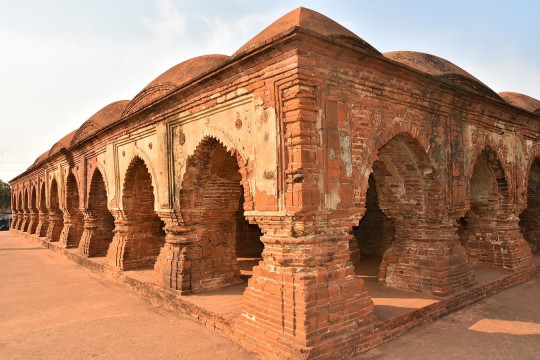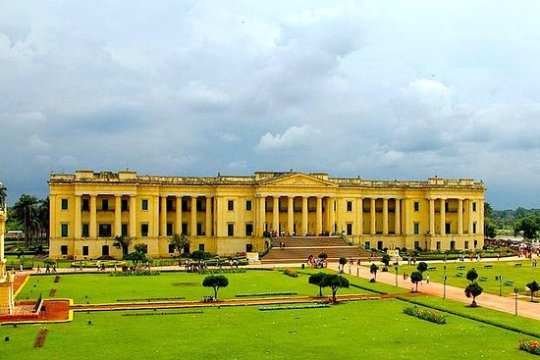#Technology in Asia
Explore tagged Tumblr posts
Text
Technology Trends in the Philippines
Photo by ThisisEngineering The latest technology trends in the Philippines are very much in line with the western world and are generally available in the Philippines. When building your home in the Philippines, you will spend considerable time on your home wish list. In this article, I want to cover some emerging technologies for building your home and then it’s down to you. You will find that…
#Digital Transformation#Emerging Technologies#Future of Technology#Philippines Technology#Tech Developments#Tech Industry Philippines#Tech Innovations#Tech Insights#Tech Market Philippines#Tech News Philippines#Tech Startups#Tech Trends 2025#Tech Trends Analysis#Tech Trends Overview#Tech Trends Report#Technology Advancements#Technology Forecast#Technology Impact#Technology in Asia#Technology Trends
0 notes
Text
"Scientists in Singapore have broken a long-standing limitation on the ability to generate electricity from flowing water, suggesting that another elemental force of nature could be leveraged for renewable electricity: rain.
With the simplest and smallest scale test setup, the team could power around 12 LED lightbulbs with simulated rain droplets flowing through a tube, but at scale, their method could generate meaningful amounts that could rival rooftop solar arrays.
Singapore experiences significant rainfall throughout the year, averaging 101 inches (2581 millimeters) of precipitation annually. The idea of generating electricity from such falling water is attractive, but the method has long been constrained by a principle called the Debye Length.
Nevertheless, the concept is possible because of a simple physical principle that charged entities on the surface of materials get nudged when they rub together—as true for water droplets as it is for a balloon rubbed against the hair on one’s head.
While this is true, the power values thus generated have been negligible, and electricity from flowing water has been limited to the driving of turbines in hydropower plants.
However, in a study published in the journal ACS Central Science, a team of physicists has found a way to break through the constraints of water’s Debye Length, and generate power from simulated rain.
“Water that falls through a vertical tube generates a substantial amount of electricity by using a specific pattern of water flow: plug flow,” says Siowling Soh, author of the study. “This plug flow pattern could allow rain energy to be harvested for generating clean and renewable electricity.”
The authors write in their study that in existing tests of the power production from water flows, pumps are always used to drive liquid through the small channels. But the pumps require so much energy to run that outputs are limited to miniscule amounts.
Instead, their setup to harness this plug flow pattern was scandalously simple. No moving parts or mechanisms of any kind were required. A simple plastic tube just 2 millimeters in diameter; a large plastic bottle; a small metallic needle. Water coming out of the bottle ran along the needle and bumped into the top section of the tube that had been cut in half, interrupting the water flow and allowing pockets of air to slide down the tube along with the water.
The air was the key to breaking through the limits set by the Debye Length, and key to the feasibility of electricity generation from water. Wires placed at the top of the tube and in the cup harvested the electricity.
The total generation rate of greater than 10% resulted in about 100 watts per square meter of tube. For context, a 100-watt solar panel can power an appliance as large as a blender or ceiling fan, charge a laptop, provide for several light bulbs, or even a Wi-Fi router.
Because the droplet speeds tested were much slower than rain, the researchers suggest that the real thing would provide even more than their tests, which were of course on a microscale."
-via Good News Network, April 30, 2025
#singapore#asia#rain#renewable energy#renewables#clean energy#electricity#science and technology#solarpunk#good news#hope
2K notes
·
View notes
Text

#blue#blue cybercore#green tech#green technology#green#green aesthetic#y2k#cybercore#cyberpunk#techno pagan#y2k futurism#2000s futurism#2000s tech#y2k aesthetic#y2k nostalgia#old ads#Japanese#retro Japan#vintage Japan#vintage Asia#cybercore aesthetic#cyber goth#cyber y2k#cyber#cyberpunk aesthetic#old tech#computer aesthetic#nerdy#y2kcore#y2k fashion
817 notes
·
View notes
Text

Fillette au téléphone, Tokyo, Japon, 1958. Marc Riboud. Silver gelatin print.
#black and white#photography#fotografia#fotografie#photographie#foto#japan#asia#childhood#telephone#retro#technology#1950s
837 notes
·
View notes
Text


#sunset#photography#tai#asia#beautiful#beautiful photos#cottagecore#landscape#sunrise#outdoor#retro#sun#night#nightwing#ai photo#ai#ai generated#ai art#ai artwork#digitalart#technology#chatgpt#art#photografy#my photos#photoshoot#photooftheday#photographer
314 notes
·
View notes
Text
A walk through Bengal's architecture
Bengali architecture has a long and rich history, fusing indigenous elements from the Indian subcontinent with influences from other areas of the world. Present-day Bengal architecture includes the nation of Bangladesh as well as the Indian states of West Bengal, Tripura, and Assam's Barak Valley. West Bengal’s architecture is an amalgamation of ancient urban architecture, religious architecture, rural vernacular architecture, colonial townhouses and country houses, and modern urban styles. Bengal architecture is the architecture of Wind, Water, and Clay. The Pala Empire (750–1120), which was founded in Bengal and was the final Buddhist imperial force on the Indian subcontinent, saw the apex of ancient Bengali architecture. The majority of donations went to Buddhist stupas, temples, and viharas. Southeast Asian and Tibetan architecture was influenced by Pala architecture. The Grand Vihara of Somapura, which is now a UNESCO World Heritage Site, was the most well-known structure erected by the Pala rulers.

The Grand Vihara of Somapura
According to historians, the builders of Angkor Wat in Cambodia may have taken inspiration from Somapura. Bengal architecture became known for its use of terracotta due to the scarcity of stone in the area. Clay from the Bengal Delta was used to make bricks.
The temple architecture has distinct features like the rich wall decoration, often known as the terracotta temples, which was one of the remarkable elements of Bengali temple architecture. The double-roofed architecture of thatched huts was replicated by Bengali temples. Square platforms were used to construct the temples. Burnt brick panels with figures in geometric patterns or substantial sculptural compositions served as the temples' adornment.

Dochala style
These served as models for many temples that were built in undivided Bengal. Construction materials used in ancient times included wood and bamboo. Bengal has alluvial soil, so there isn't a lot of stone there. The bricks that were utilized to build the architectural components were made from stone, wood, black salt, and granite. Bengal has two different types of temples: the Rekha type, which is smooth or ridged curvilinear, and the Bhadra form, which has horizontal tiers that gradually get smaller and is made up of the amalaka sila. Mughal architecture, including forts, havelis, gardens, caravanserais, hammams, and fountains, spread throughout the area during the Mughal era in Bengal. Mosques built by the Mughals in Bengal also took on a distinctive regional look. The two major centers of Mughal architecture were Dhaka and Murshidabad. The do-chala roof custom from North India was imitated by the Mughals.

Jorasako thakurbari

The Rasmancha is a heritage building located at Bishnupur, Bankura district, West Bengal.
Influence of the world on Bengal architecture: Although the Indo-Saracenic architectural style predominated in the area, Neo-Classical buildings from Europe were also present, particularly in or close to trading centers. While the majority of country estates had a stately country house, Calcutta, Dacca, Panam, and Chittagong all had extensive 19th and early 20th-century urban architecture that was equivalent to that of London, Sydney, or other British Empire towns. Calcutta experienced the onset of art deco in the 1930s. Indo-Saracenic architecture can be seen in Ahsan Manzil and Curzon Hall in Dhaka, Chittagong Court Building in Chittagong, and Hazarduari Palace in Murshidabad.

Hazarduari Palace in Murshidabad
The Victoria Memorial in Kolkata, designed by Vincent Esch also has Indo-Saracenic features, possibly inspired by the Taj Mahal. Additionally, Kolkata's bungalows, which are being demolished to make way for high-rise structures, have elements of art deco. The 1950s in Chittagong saw a continuation of Art Deco influences. The Bengali modernist movement, spearheaded by Muzharul Islam, was centered in East Pakistan. In the 1960s, many well-known international architects, such as Louis Kahn, Richard Neutra, Stanley Tigerman, Paul Rudolph, Robert Boughey, and Konstantinos Doxiadis, worked in the area.

The Jatiyo Sangshad Bhaban
This iconic piece of contemporary Bangladeshi architecture, was created by Louis Kahn. Midsized skyscrapers dominate the cityscapes of contemporary Bengali cities, which are frequently referred to as "concrete jungles." With well-known architects like Rafiq Azam, architecture services play a key role in the urban economies of the area. Overall Bengal architecture was influenced by various contemporaries of their time and continues to evolve.

Gothic architectural style seen in St. Paul's Cathedral in Kolkata.

Zamindar era buildings in ruin.

Belur Math in Howrah
#bengali#bangla#west bengal#bangladesh#tripura#assam#desi#বাংলা#india#architecture#tales#bengal architecture#history#kolkata#international#technology#information#temple#asia#bricks
193 notes
·
View notes
Text
DAILY DOSE: Ernst's Medicaid Remark - "We all are going to die." - Sparks Outrage at Iowa Town Hall; Trump Officials Downplay Fake Citations in Children's Health Report
Ernst’s Medicaid Remark Sparks Outrage at Iowa Town Hall During a town hall in Butler County, Iowa, Senator Joni Ernst faced backlash after dismissing concerns over Medicaid cuts with the remark, “We all are going to die.” The comment, made in response to questions about the Trump-endorsed “One Big Beautiful Bill Act,” drew boos from constituents. Ernst later doubled down with a sarcastic…
#Africa#artificial intelligence#Asia#Australia#CAR-T#Europe#Featured#North America#politics#public health#robotics#South America#technology#zoology
3 notes
·
View notes
Text
Technology in Africa: Key Areas of Growth

1. Mobile and Internet PenetrationMobile Revolution:
Africa is the world’s fastest-growing mobile phone market. Mobile penetration has surpassed 80%, with smartphones becoming more affordable.Internet Access: Over 500 million people now have internet access, primarily through mobile devices.Mobile Money: Services like M-Pesa in Kenya have revolutionized financial access, enabling mobile banking, payments, and loans for unbanked populations.
2. Startups and Innovation HubsTech Hubs:
Over 600 tech hubs (e.g., Nairobi's iHub, Lagos’ Yaba ecosystem, Cape Town's Silicon Cape) serve as incubators for innovation.Startup Boom: African startups attracted over $3 billion in investment in 2022, especially in fintech, agritech, healthtech, and edtech.Youth-Driven Innovation: With 60% of Africa’s population under 25, there’s a strong focus on youth-led digital solutions.
3. FintechAfrica
is a global leader in mobile-based financial services.Startups like Flutterwave, Chipper Cash, and Paystack are transforming digital payments.Fintech addresses challenges like low banking access and cross-border transactions.
4. AgritechLeveraging drones, satellite data, and mobile apps to improve yields and market access for farmers.Platforms like Twiga Foods (Kenya) and Farmcrowdy (Nigeria) are streamlining food supply chains and offering digital tools to farmers.
5. HealthtechTelemedicine and mobile health services are filling gaps in healthcare access.Apps like mPharma (Ghana) and Zipline (drone delivery of medical supplies in Rwanda) are game-changers.
6. Edtech and E-LearningCOVID-19 accelerated the adoption of online education.Startups like uLesson (Nigeria) and Eneza Education (Kenya) provide accessible digital learning content for students.
7. Government and Policy SupportSeveral governments are investing in digital infrastructure and supportive policies.Rwanda’s Vision 2050 and Kenya’s Konza Technopolis project show long-term digital commitment.
8. ChallengesInfrastructure gaps: Power, internet, and transport limitations in rural areas.Funding disparities: Most investments go to a few countries (e.g., Nigeria, Kenya, South Africa).Digital literacy: Skills development still lags in many regions.🔮 Future OutlookAfrica’s digital economy could contribute over $180 billion to GDP by 2025.AI, blockchain, and green tech are emerging fields with huge potential.Regional cooperation (e.g., AfCFTA) may enhance cross-border digital trade.
#technology#technique#technews#techinnovation#smart tech#Technology Africa#Africa#Asia#tech#electronics#hardware#phones#technoblade
2 notes
·
View notes
Text
Hey guys,
I'm excited to share two new podcast episodes I've been working on. They're simple explorations into topics that fascinate me, language evolution and artificial intelligence. I hope you find them as intriguing as I do.
🎙️ Prakrits and the Story of Indo-Aryan Languages
Listen here: Spotify Link
🤖 What is AI and Large Language Models?
Tune in here: Spotify Link
Thank you for taking the time to listen. Your support means a lot. If you have any thoughts or feedback, I'd love to hear them.
#hobby#podcasts#india#journal#bengali#south asia#desiblr#ai#artificial intelligence#podcasting#audio#languages#coding#technology#Spotify
2 notes
·
View notes
Text

Chiba Institute of Technology
“Tsudanuma Campus of the Chiba Institute of Technology, in Narashino City, Chiba Prefecture, Japan.” - via Wikimedia Commons
#chiba prefecture#wikipedia#wikipedia pictures#japan#narashino#narashino city#chiba institute of technology#千葉工業大学#univeristy#education#higher education#architecture#wikimedia commons#千葉工大#technical university#asia
7 notes
·
View notes
Text
📌 Title: 🔴 South Korea & Japan: A New Trade Era After 10 Years?
📌 Description: After a decade of stalled talks, South Korea and Japan are finally resuming trade negotiations. Can this agreement strengthen their economies and reshape Asia’s economic landscape? Find out what experts are saying about this historic move!
📢 We want to keep bringing you relevant news! But we need your support. Follow us and help grow our channel! 🙌
📰 Tap "Subscribe" on YouTube or “+ Follow” on our profile to stay updated with the latest news! 🚀
#SouthKorea#Japan#TradeNegotiations#GlobalEconomy#Technology#Asia#News#WorkNews#Trends#Viral#Analysis#Economy#Politics#International#CurrentAffairs#Market#Geopolitics#FYP
2 notes
·
View notes
Text
perfect dark zero, unfortunately isn’t perfect. Because man, that Sinophobia really shows its bare ass and it really takes a lot of fun out of the game. Like c’mon why is this even here, it doesn’t even NEED to be here. Who on the development team thought that was a good idea??? Genuinely would like to know who thought this was a good idea (it’s not!!)
aside from that elephant in the room, I would otherwise say it’s a friendly game for noobs like me who don’t play fps games. that said I have some gripes with the weapon swapping controls. why did they dedicate that to the Y Button they should have mapped that to the D-Pad, it would’ve been WAY easier + you’re using the d-pad to use spy gadgets already and to be in unarmed combat, so why did they not assign secondary weapons to the D-Pad is BEYOND ME. (Scrolling would have been a pain but the muscle memory is already there! Use it to your games advantage!!)
#shallow rambles#rarewareposting#could have done without the blatant Sinophobia but unfortunately a lot of cyberpunk stories feature ‘isms’#Into their core at least 99.99% of the time.#ever since blade runner this fear of east Asia taking over technologically and economically has unfortunately been baked into the beginning#It sucks. I can only hope future cyberpunk stories avoid this entirely
3 notes
·
View notes
Text
Ukraine targets Moscow with drone attack
2 notes
·
View notes
Text


#sunset#photography#tai#asia#beautiful#beautiful photos#cottagecore#landscape#sunrise#outdoor#retro#sun#night#nightwing#ai photo#ai#ai generated#ai art#ai artwork#digitalart#technology#chatgpt#art#photografy#my photos#photoshoot#photooftheday#photographer
26 notes
·
View notes
Text
my sister and i made a book bingo for 2024 and one of the categories she chose was romantasy and i rarely, rarely do this, but i MUST tell you that my pick for romantasy (a far wilder magic by allison saft) has me looking up one-star reviews on goodreads to validate my feelings.
#shihpost#how do you write a book about teenage romance#and think 'you know what i can give a primer in? settler-colonialism'#except it's not even about colonists vs indigenous population#oh no. the indigenous population simply never exists#instead it's about the fantasy anglo-saxon protestants (new albian katharists)#grumping and hate criming fantasy irish catholics (sumic banvishmen) and fantasy ethnic jews (yu'adir)#and then they KILLED THE INDIGENOUS SPIRIT#FOR PRAGMATIC REASONS YES OKAY BUT ALSO. WHAT A STATEMENT???#people have described it as a royai (fma) fic with a facelift#because the setting borrows largely from fma down to the technology available to its people#but it's wild to me that nowhere in allison saft's worldbuilding inspiration was bipoc#queer relationships exist without question here!! you couldn't distill fantasy asia or fantasy africa??
9 notes
·
View notes
Text
DAILY DOSE: FBI Removes Chinese Malware from Over 4000 US Systems; Three More Cats Infected with H5N1 Avian Flu.
FBI REMOVES CHINESE MALWARE FROM 4258 US COMPUTERS The FBI announced that it removed Chinese malware, PlugX, from 4,258 US-based computers and networks. The malware, developed by the Mustang Panda group under the direction of the Chinese government, has been infecting systems since at least 2014, targeting US victims, governments, businesses, and Chinese dissidents. The malware remains largely…
#Africa#artificial intelligence#Asia#Australia#avian influenza#Europe#Featured#hacking#malware#North America#obesity#South America#technology
2 notes
·
View notes